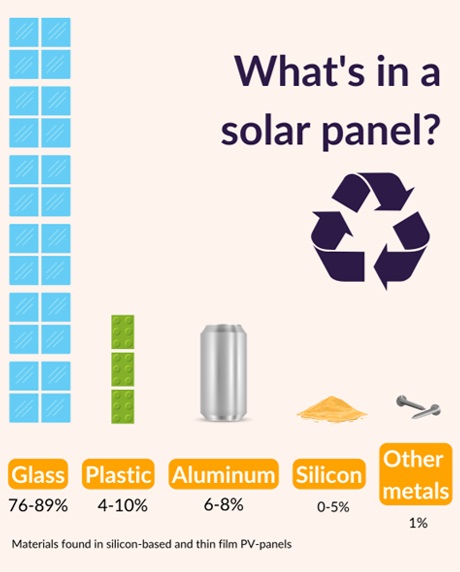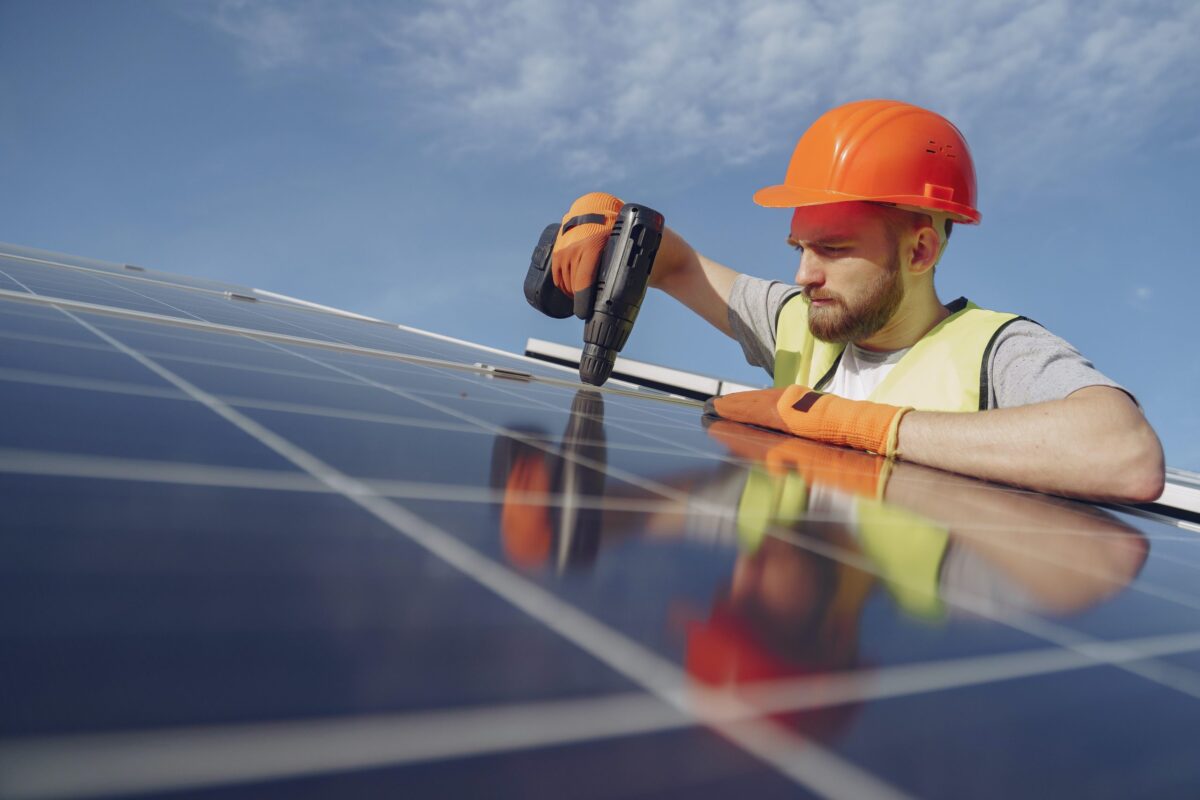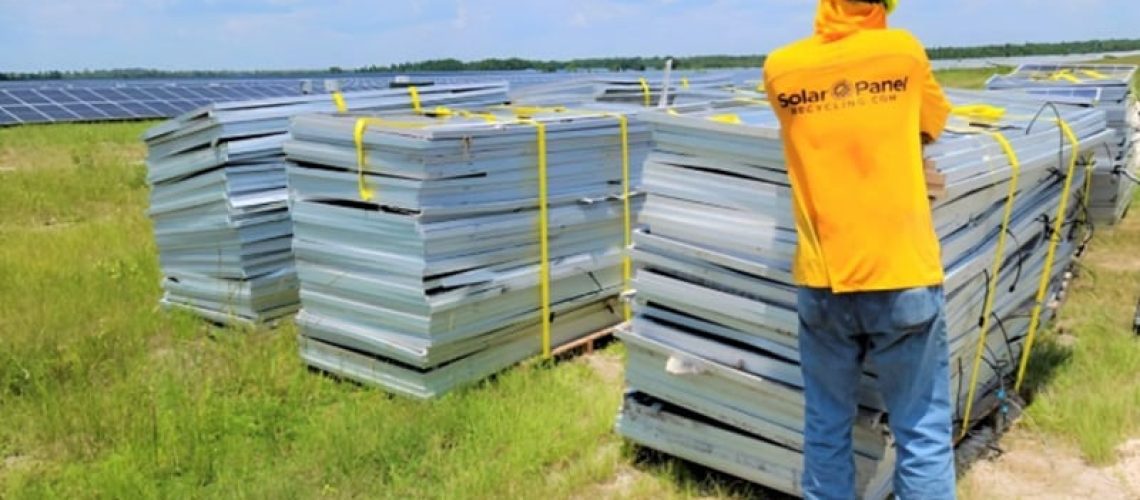The market for end of life for solar panels is burgeoning alongside the rapid growth in solar installations. A report by the EPA and IRENA forecasts that by 2030 there will be 1 million tons of solar panels reaching end of life and 20 years later it will balloon to 10 million tons.
Brett Henderson, CEO, co-founder of Solarpanelrecycling.com (SPR) shared insight into this critical market during Day Three of pv magazine USA Week, and noted that while the EPA figures are impressive, SPR anticipates an even faster timeline.
Solar installations has spiked throughout the U.S., and with life expectancy of solar panels currently at about 25 to 30 years, one might expect the bubble of waste to be decades away. However, Henderson said that repowering and damaged panels are creating waste now. There’s a lot of repowering going on at about ten years, due to new technologies coming along that are higher efficiency, he said. “By removing those old panels in favor of today’s technology, solar panels are reaching end of life faster than expected.”
Now the greatest source is construction breakage at 40%. Weather events and O&M each contribute 25%. Decommissioning and repowering stands at 10%. But in just five years, decommissioning and repowering will account for 80% of the waste, with construction breakage accounting for 10% and O&M and weather events each standing at 5%.
Driving forces
Currently the cost of putting solar panels through a recycling process is sending many panels to landfills or “incomplete” recycling. Incomplete is when it may go to a scrap metal yard or recycler that ultimately is going to capture an aluminum frame but does not capture the glass and other metals, and does not support the solar supply chain, Henderson said.
Cost is what drives most solar panels to landfills, and transportation makes up much of that cost. As recycling centers are built in close proximity to where they’re needed, the cost of recycling will come down.
True recycling
True solar panel recycling is the clean separation and recovery of all materials within a PV modules including aluminum, glass, silicon, metals and plastics; all of which can be introduced back into the supply chain. Like other forms of disposal, transportation costs are a factor in true recycling, as well as the more technical processes needed to remove double-sided glass.

True recycling uses mechanical, thermal or metallurgical techniques to cleanly separate the components of a solar panel. Henderson said that at SPR they mostly use mechanical because it has a very low energy consumption and allows them to be nimble as new technologies come along. The higher the purity, which means no co-mingling of materials, the more applications they can be used in in the supply chain.
The good news is that costs are coming down. Henderson said they’ve dropped 42% in the last 36 months months. This is due, he said, to recyclers achieving economies of scale and new facilities being located close to demand.
Policies as drivers
A driving force is end-of-life policy and association leadership. Henderson said that 31 states have some level of decommissioning policy, and it’s important to note that they are rapidly evolving and changing. They are mostly bi-partisan support at state levels, and it may be for wildly different reasons, Henderson said. But the main reason is landfill capacity. He cited as an example landfills in North Carolina that service the most populated areas have less than 10 year life left in them. By diverting panels from landfills, and getting them back into the supply chain not only creates jobs, but keeps landfill costs down.
The EPA classifies solar panels as hazardous, but there is a plan to reclassify them as universal waste, which will encourage more recycling. SEIA has had a national PV recycling program in place and is making a certification for recyclers for best practices, making sure they get recovery rates and clean commodity separations to send materials back into the supply chain.
Misconceptions
The many misconceptions about end of life for solar panels, Henderson said is actually a positive driver. One of these misconceptions is that the panels won’t be hitting the waste stream for 25 to 30 years. He said the stats that SPR has seen is that they’re hitting the stream now and will grow substantially over the next five years. Some also say that solar cannot be recycled, which is clearly not true, he said. And there are those who say that it is not clean energy if they go into the landfill. Henderson said that these claims are just categorically false.
Fortunately there is a new wave of stakeholders who have recognized that there is end-of- life management for solar panels and the importance of not diverting them to a landfill or an incomplete recycler. Henderson said that other drivers are the increasing importance of environmental stewardship and ESG reporting, and the mission to keep clean energy clean through end of life. What’s needed to keep the momentum going, however, is education and outreach, which Henderson noted are extremely important and require recyclers to let the industry know how it’s getting done. “It requires transparency and integrity,” he said.
Feeding the solar supply chain
Currently there are applications in many sectors that take the clean recycled glass, silicon and metals. Where the major opportunities lie, however, is getting these materials back into the solar industry, Henderson said. “It shouldn’t be all or nothing—it’s important that the materials have a supply chain home but there’s an important role that true recyclers can play in feeding the supply chain, helping to support the U.S. solar manufacturing industry.”
“We simply cannot, as an industry, choose to landfill solar equipment all the while pushing for clean energy support. We also have this rare and wonderful and exciting opportunity to establish a robust recycling industry proactively in U.S., which is rare, for a new waste stream ahead of this avalanche of volume,” Henderson said. “If all stakeholders buy into diverting end of life panels to true recyclers instead of landfills, we can start capturing these commodities and the solar panel recycling industry can support the U.S. solar supply chain.”
Popular content




